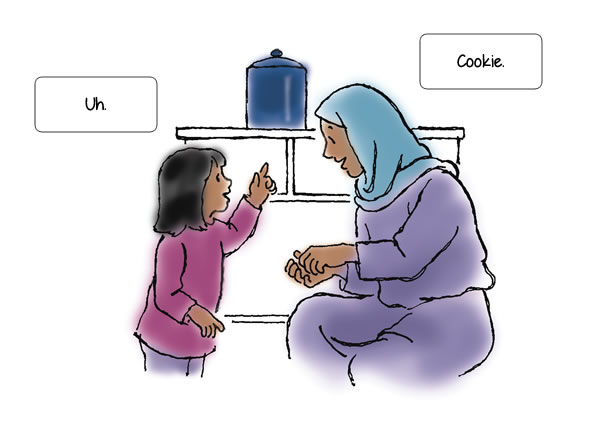Language-building tip for Communicators:
Interpret your child’s message
(This tip is taken from the Hanen guidebook It Takes Two to Talk)
Your Communicator sends messages using actions, looks, gestures, facial expressions and sounds. When your child communicates, think about the meaning of what she’s trying to tell you and then interpret it. In a short sentence, say what you think she means. For example, if you give your child a piece of apple and she turns her head away or shakes her head, saying, “nuh-nuh”, you can say, “Okay, no apple” or “You don’t want the apple.”
Interpreting your child’s message lets her know she’s been understood – which is very important – and gives her the words she can use when she’s ready.

Mom interprets Hanifa's message by making the sign for cookie and saying the word at the same time.
Why this works
Interpreting your child’s message is part of the “Follow your Child’s Lead” strategy from the It Takes Two Talk Program and guidebook.
Following a child’s lead has been shown to improve young children’s language development. Building on what a child is interested in and providing the words for what she is communicating appear to increase the child’s attention and motivation to communicate. The more the child communicates, the more the parent responds, setting up more opportunities for the child to learn.
Don’t know your child’s stage of communication?
Fill out the Stages of Communication checklist from the It Takes Two to Talk guidebook.